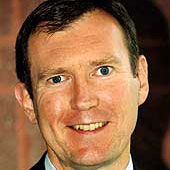More Like Us: The Growth of the Global Middle Class
How has globalization contributed to creating a global middle class?
February 22, 2010
The rise of a global middle class and the decline in poverty has not just been about higher incomes and more consumption. The rising global tide we have seen in the past two decades has allowed families in developing countries to acquire healthier lives.
Despite all the current travails we have to contend with, the amazing progress of mankind during our era of globalization is about more than cars and TVs. You probably won’t hear these facts on the nightly news:
- Life expectancy. People in most poor countries are living longer than ever before, and the gap between rich and poor countries is closing. Since 1960, the average life expectancy in developing countries has jumped from 45 years to 65 years. The gap between life expectancy in the developing and advanced economies has been cut in that time from 24 years to 14 years.Most of the credit belongs to the growth of medical knowledge, but globalization has helped to develop and spread that knowledge. It has enabled people in poor countries to better afford the medicines, vaccinations and public health improvements that put that knowledge into practice.
- Infant mortality. The global infant mortality rate — the share of children born alive who die before their first birthday — fell by 60% between 1960 and 2005. Again, the spread of modern medicine played the primary role, but rising levels of trade and income also helped.The share of children vaccinated against measles, diphtheria, tetanus and whooping cough has jumped sharply to about three-quarters. Smallpox and polio, which were scourges as recently as the 1950s, have been virtually eliminated from the human race.As a result, two million fewer children are dying each year in the world compared to 1990. Only the most hardened critics of globalization can fail to be encouraged by such tangible progress.
- Daily bread. An adult human being needs 2,000 to 2,310 calories a day to perform everyday activities while preserving health and body weight. In 1961, the average daily per capita intake of calories was 1,930, or just below the minimum.By 2002, after the “Green Revolution,” the average intake had risen to 2,666 calories. The share of people living in developing countries who are undernourished was cut by more than half, from 37% to 17%. Famines caused by natural disasters such as crop failures have become a thing of the past.
- Literacy. As recently as 1970, fewer than half of the adults in developing countries could read or write. Today the proportion has risen to two-thirds. Progress has been even more rapid among youth, especially young girls.Girls still lag behind boys in years of schooling, for a host of cultural reasons, but the amount of schooling for girls compared to boys climbed from 56% in 1960 to 73% in 2000. The gap in East Asia and Latin America has been abolished entirely.
- Child labor. With more boys and girls in school learning to read and write, the share working has been falling. Worldwide, the proportion of children ages ten to 14 who are working fell from 25% in 1960 to 10% in 2003, and it has continued to fall since then.
- Democracy and human rights. Political scientists since Aristotle have noted that an educated and property-owning middle class provides the most solid foundation for representative democracy.
When households own real property — their homes, businesses and financial assets — they are less likely to succumb to revolutionary appeals that have brought so much upheaval and misery to poor countries. When people are better educated, they are more able to exercise independent judgment in choosing their rulers and public policy.
Economic independence nurtures the confidence to assert social and political independence from the government. Those traits have been the durable foundation of American freedom since our founding. They are now gripping much of the — rapidly — developing world.
Editor’s Note: This article has been adapted from an excerpt from Daniel Griswold’s book, “Mad About Trade.”
Read Part I here.
Takeaways
An educated and property-owning middle class provides the most solid foundation for representative democracy.
As recently as 1970, fewer than half of the adults in developing countries could read or write. Today the proportion has risen to two-thirds.
Worldwide, the proportion of children ages ten to 14 who are working fell from 25% in 1960 to 10% in 2003, and it has continued to fall since then.
The rising global tide we have seen in the past two decades has allowed families in developing countries to acquire healthier lives.
The global infant mortality rate fell by 60% between 1960 and 2005, and as a result of vaccinations, two million fewer children are dying each year in the world compared to 1990.
Read previous
The Global Economy and Me
February 19, 2010
